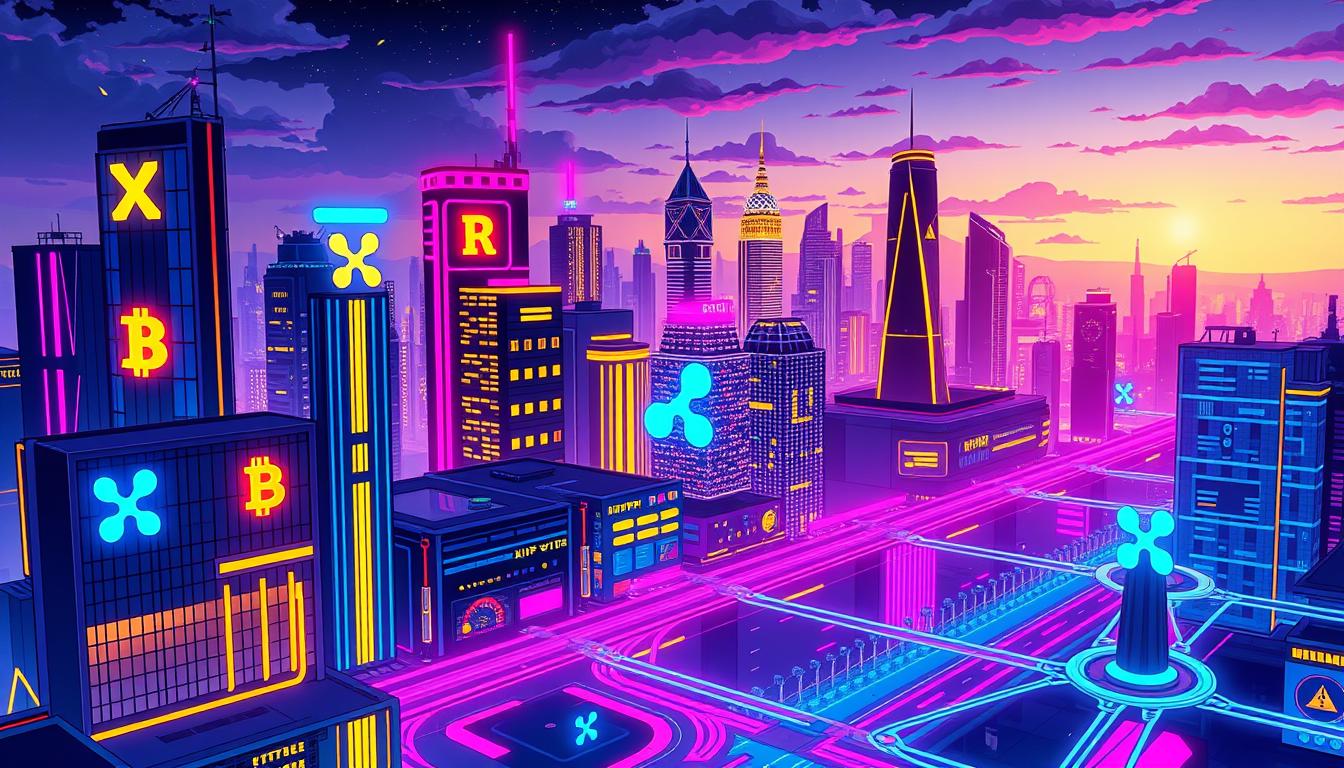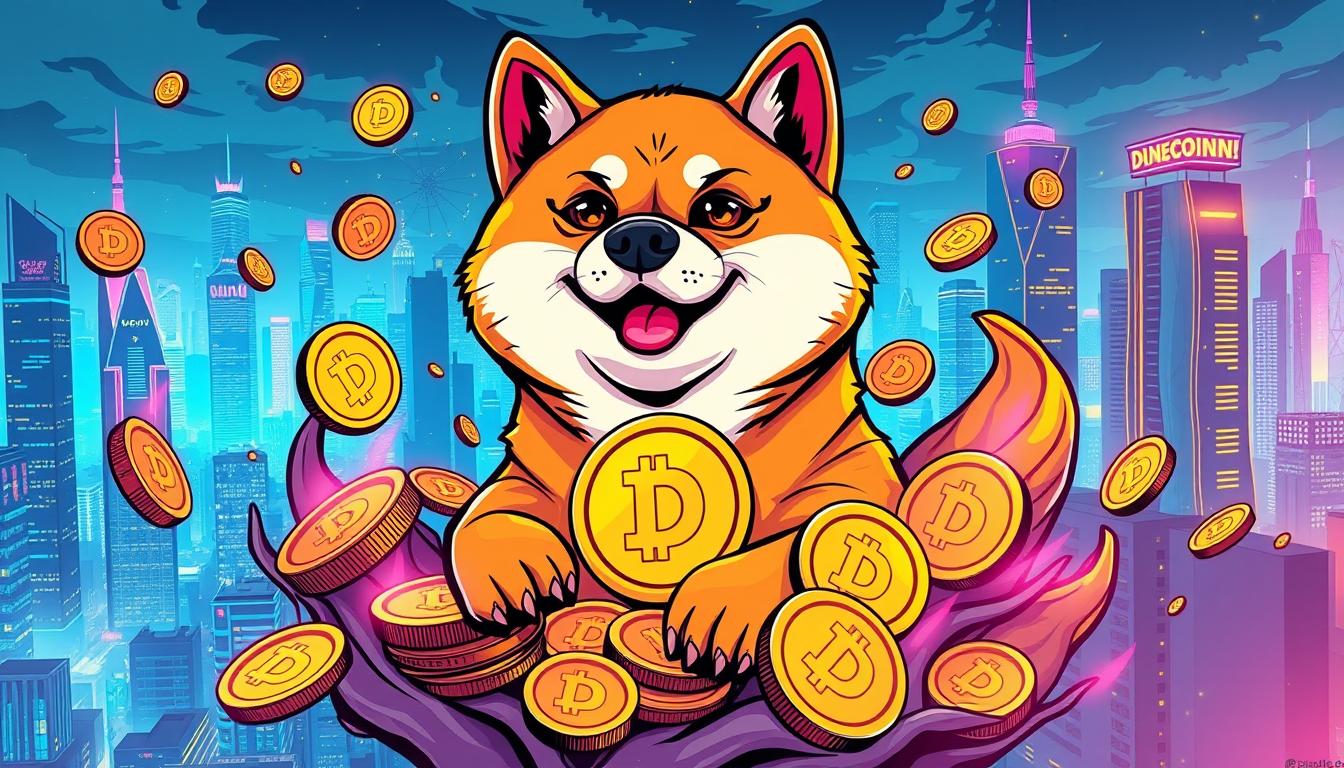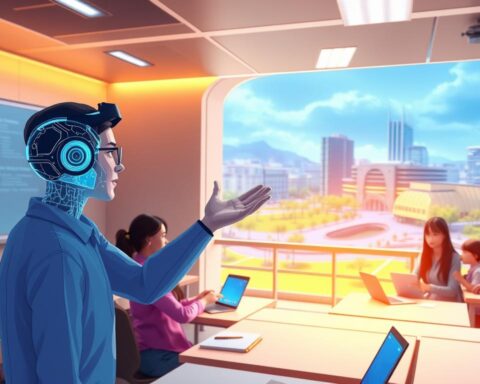In the fast-changing world of cryptocurrency, Cardano stands out. It’s known for its focus on sustainability and rigorous research. Cardano has a special two-layer setup, uses the Ouroboros protocol, and bases its work on peer-reviewed studies. It’s set to change how we see blockchain technology.
The IOG team, led by Charles Hoskinson, created Cardano. It’s a third-generation blockchain aiming to fix past crypto issues1. Cardano is built on a scientific approach and research. It has a five-era development plan, each focusing on a different part of the blockchain2.
Key Takeaways
- Cardano is a third-generation blockchain platform designed for sustainability, scalability, and interoperability.
- The platform employs a unique two-layer architecture, with the Cardano Settlement Layer (CSL) for transactions and the Cardano Computation Layer (CCL) for smart contracts.
- Cardano’s development is guided by a scientific philosophy and a research-driven approach, based on peer-reviewed academic research.
- The platform’s native cryptocurrency, ADA, is used for various functions within the Cardano ecosystem.
- Cardano’s roadmap is divided into five eras, each focusing on different aspects of the blockchain, including foundation, decentralization, smart-contract deployment, scalability, and governance.
Understanding Cardano’s Foundation and Core Principles
Cardano was started by Charles Hoskinson in 2015. It’s a third-generation blockchain aiming to solve big problems like scalability and interoperability3. Unlike older blockchains, Cardano uses proof-of-stake (PoS) instead of proof-of-work (PoW)3.
The team behind Cardano does deep research and follows a strict, peer-reviewed process. This makes Cardano reliable and strong3.
The Vision of Charles Hoskinson
Charles Hoskinson wants Cardano to help create a fairer, more sustainable financial world3. He focuses on openness, transparency, and using science in blockchain development3. Hoskinson aims to bring reliable financial services to those who don’t have them now, thanks to Cardano’s new features and strong security3.
Third-Generation Blockchain Innovation
Cardano is special because it focuses on making blockchains better in many ways3. It’s built with Haskell, a programming language that helps ensure code is correct3. This makes the Cardano network reliable and secure3.
Scientific Philosophy and Research-Driven Approach
Cardano follows a scientific approach and puts research first3. It’s checked by top engineers and academic experts in blockchain and cryptography3. This ensures Cardano is technically sound and up-to-date with the latest in the field3.
This focus on research and peer review makes Cardano a leader in DeFi and blockchain security3.
Cardano’s Unique Two-Layer Architecture
At the heart of Cardano blockchain is a two-layer architecture. It boosts scalability, efficiency, and flexibility4. The layers are the Cardano Settlement Layer (CSL) and the Cardano Computation Layer (CCL), each with its own role.
The Cardano Settlement Layer (CSL) manages ADA transactions4. ADA is Cardano’s native cryptocurrency. This layer uses Ouroboros, a proof-of-stake algorithm, for secure and scalable transactions4.
The Cardano Computation Layer (CCL) powers smart contracts and dApps. This setup allows for efficient processing and upgrades. It helps the network meet changing needs without problems.
Midgard, a Layer 2 solution by Anastasia Labs, aims to boost Cardano’s scalability and efficiency5. Philip DiSarro, Anastasia Labs’ CEO, highlights Midgard’s unique decentralized design. It makes Cardano stand out from Ethereum and other blockchains5.
Midgard uses Cardano’s EUTxO architecture for better efficiency5. The Cardano community is excited about Midgard. They see it as a major leap forward for blockchain opportunities5.
“Midgard’s decentralized design sets Cardano apart from leading blockchains, unlocking new possibilities in the blockchain sector.”
Cardano’s architecture and Midgard Layer 2 solution make it a strong player in blockchain. They enable the growth of secure and scalable decentralized apps.
The Revolutionary Ouroboros Protocol: Proof-of-Stake Excellence
At the heart of Cardano’s blockchain network lies the groundbreaking Ouroboros protocol. It’s a proof-of-stake (PoS) consensus mechanism that stands out from traditional proof-of-work (PoW) systems6. This innovative protocol is more energy-efficient than PoW systems, showing Cardano’s commitment to sustainability and environmental responsibility.
Energy Efficiency Through Innovation
Ouroboros uses a unique validator selection process. It relies on the amount of ADA, Cardano’s native cryptocurrency, that users hold and stake. This approach eliminates the need for energy-intensive mining rigs, significantly reducing the platform’s carbon footprint. It aligns with Cardano’s focus on environmental sustainability.
Security and Scalability Features
The Ouroboros protocol has been thoroughly tested and proven to be secure, scalable, and resistant to attacks7. Its innovative design ensures Cardano’s blockchain can handle a high volume of transactions without compromising the network’s integrity. This makes it ready for widespread adoption and real-world applications.
Validator Selection Process
Cardano’s Ouroboros protocol selects validators based on the amount of ADA they hold and stake. This ensures the network is secured by individuals with a vested interest in its success7. This process promotes decentralization and fairness, allowing a diverse range of participants to contribute to the network’s validation and governance.
By leveraging the Ouroboros protocol, Cardano has become a leader in sustainable and scalable blockchain technology. It sets a new standard for energy efficiency and security in the cryptocurrency space6.
“The Ouroboros protocol is a testament to Cardano’s commitment to academic rigor and innovation. It paves the way for a more sustainable and secure blockchain ecosystem.”
ADA: The Native Currency Powering Cardano’s Ecosystem
ADA is named after Ada Lovelace, a pioneer in computer programming. It’s the native cryptocurrency for the Cardano blockchain network8. Unlike many others, ADA is used for transactions, staking, and governance8. It has a total supply of 45 billion coins, which helps keep its value8. By 2023, ADA is expected to be among the top 10 cryptocurrencies8.
ADA is key to the Cardano network9. Users can stake to validate the network and earn ADA rewards8. A recent update lets ADA holders vote on the network’s development8. ADA also pays transaction fees on the network, with fees based on transaction size and complexity8.
Cardano focuses on sustainability and innovation8. It uses Ouroboros, the first peer-reviewed proof-of-stake algorithm, for consensus and security8. The Alonzo hard fork in 2021 added smart contract functionality, enabling dApps8. The Hydra protocol aims to increase transaction throughput to thousands per second8.
Cardano’s future plans include sustainability and interoperability8. The Chang hard fork in 2024 will introduce decentralized governance and a voting system8. This system will feature Delegated Representatives, allowing users to vote through chosen representatives8.
As Cardano grows, ADA’s value is expected to increase9. ADA’s versatility and role in Cardano’s ecosystem make it a key asset in the crypto and blockchain world9.
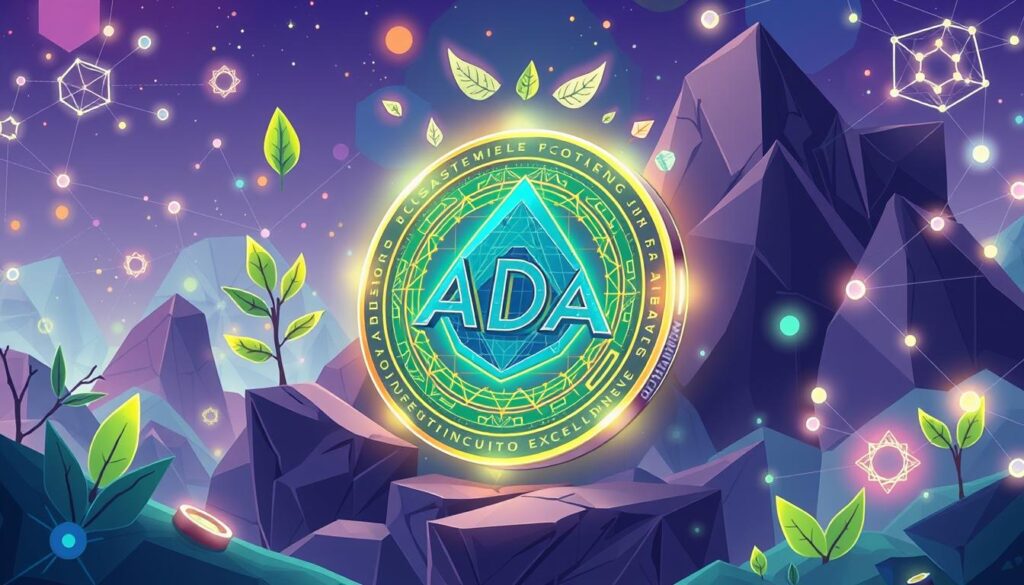
| Key Cardano Milestones | Year |
|---|---|
| Cardano project established | 102015 |
| Shelley update released | 102020 |
| Whitepapers produced by Cardano team | 10Over 90 |
| Initial Coin Offerings (ICO) raised | 10$62.2 million |
| ADA supply distributed during ICO | 1057.6% |
“ADA serves as a digital currency and as a token to pay commissions for transactions in the Cardano network.”10
Cardano aims to fulfill scalable smart contract functionality in the future10.
Cryptocurrency, Coins, Cardano Security, Blockchain Technology, Cardano
Cardano’s blockchain technology focuses on security. It uses advanced cryptographic protocols and a strong distributed ledger11. The proof-of-stake (PoS) consensus mechanism, called Ouroboros, is very energy-efficient and scalable11.
Network Security Implementation
Cardano’s security comes from its PoS protocol. Validators must stake their ADA tokens to join the consensus process11. This makes them care about the network’s safety, keeping it honest and secure11.
Cardano also uses strong cryptographic protocols. These include key management and encryption to protect against attacks11.
Blockchain Infrastructure
Cardano’s blockchain is designed to be strong and grow with the network. It has a two-layer architecture for better transaction processing11. This setup keeps the network secure and decentralized11.
Cardano’s modular design makes it flexible and adaptable. It supports interoperability and easy upgrades11.
Transaction Processing Mechanisms
Cardano’s transaction system is secure and transparent. It uses advanced cryptography to prevent fraud and double-spending11. The network is also very efficient, using less energy than others11.
Cardano aims to set new standards in blockchain technology. It focuses on security, scalability, and efficiency11. With its research, innovation, and community involvement, Cardano is leading the blockchain industry11.
“Cardano’s unwavering focus on security and scalability through its advanced cryptographic protocols and distributed ledger architecture is a testament to its dedication to building a sustainable and trustworthy blockchain ecosystem.”
Environmental Sustainability and Energy Efficiency
Cardano stands out in the blockchain world because of its focus on the environment. It uses a proof-of-stake system, which cuts down energy use a lot. This is unlike Bitcoin’s proof-of-work system, which uses a lot of energy12.
The Ouroboros protocol, used by Cardano, has been tested and reviewed by experts. It’s known for being energy-efficient, secure, and strong against attacks12.
Cardano doesn’t need mining, which means it uses less energy. This makes it better for the planet12. It also means lower fees and faster transactions than other blockchains12.
Because of its green design, Cardano attracts people who care about the environment. It’s seen as a forward-thinking choice in the blockchain world12.
Cardano works with the Ethiopian government on a blockchain project for education12. It also partners with universities to keep improving and staying green12.
| Cryptocurrency | Energy Consumption per Transaction (kWh) |
|---|---|
| IOTA | 0.00011 |
| XRP | 0.0079 |
| Chia | 0.023 |
| Dogecoin | 0.12 |
| Cardano | 0.5479 |
| Litecoin | 18.522 |
| Bitcoin Cash | 18.957 |
| Ethereum | 62.56 |
| Bitcoin | 707.0 |
Cardano’s Ouroboros protocol is very energy-efficient. A study by TRG Datacenters shows it uses much less energy than Bitcoin and Ethereum13. This shows Cardano’s goal of being a green blockchain ecosystem.
Cardano also supports other green cryptocurrencies like IOTA and Nano13. As more people look for sustainable cryptocurrency options, Cardano leads the way13.
“Cardano’s energy-efficient protocol leads to lower transaction fees and faster processing times compared to proof-of-work blockchains.”12
Cardano wants to change the blockchain industry by being green and efficient. It keeps improving and shows the future of cryptocurrency can be eco-friendly.
Smart Contracts and DApp Development on Cardano
Cardano is a third-generation blockchain that leads in developing decentralized applications (dApps) and smart contracts14. It uses the Plutus platform to help developers make innovative apps. These apps benefit from Cardano’s scalability, interoperability, and sustainability14.
Plutus Platform Integration
The Plutus platform is Cardano’s smart contract environment. It lets developers build and deploy secure, efficient dApps14. Plutus uses a functional programming language for smart contract development. This ensures the contracts are reliable and trustworthy, making Cardano great for critical apps.
Developer Tools and Resources
Cardano offers a wide range of tools and resources for developers15. These include SDKs, documentation, tutorials, and a community of developers15. Shamla Tech, a leading blockchain company, provides customized Cardano solutions. They help businesses use Cardano’s power for their needs15.
Use Case Scenarios
The Plutus platform and Cardano’s infrastructure support many use cases for smart contracts and dApps15. Industries like finance, supply chain, and healthcare can benefit from Cardano’s security and cost savings15. Cardano is great for tokenization, cross-chain integrations, DeFi apps, and asset management. It helps developers solve real-world problems with innovative solutions14.
As Cardano grows, it becomes a top choice for businesses and developers. It offers scalability, interoperability, and sustainability for decentralized applications and smart contracts14.
Cardano’s Academic Approach to Blockchain Development
Cardano’s growth is based on deep academic research and peer review. It works closely with universities and research groups. This ensures its technology is grounded in solid science16. This careful method helps avoid problems and builds a strong base for the network’s growth.
At Cardano’s core is its unique Ouroboros Proof-of-Stake (PoS) consensus protocol16. Ouroboros is the first PoS algorithm to be reviewed and audited by experts. This shows Cardano’s commitment to openness and responsibility16. Also, Cardano uses Haskell, a programming language known for its ability to be checked for errors.
Cardano’s team, IOG, has published many papers to support the platform and the blockchain field16. Their focus on research and teamwork makes Cardano stand out. It shows a dedication to lasting success and innovation, not just quick gains.
Cardano aims to give economic identities to billions, mainly in poor countries16. This goal shows Cardano’s aim to use blockchain for good. It’s a key part of its academic-focused approach.
| Metric | Value |
|---|---|
| ADA Supply Distributed to Investors in ICO | 57.6% of total, raising $62.2 million USD17 |
| Maximum ADA Supply | 45 billion17 |
| Current Circulating ADA Supply | Approximately 31 billion17 |
| ADA Allocation to Founders | 16% of circulating supply17 |
| ADA Allocation to IOHK | 2.5 billion at launch, plus 2.1 billion to EMURGO17 |
| ADA Allocation to Cardano Foundation | 648 million17 |
Cardano’s strong focus on research, peer review, and science makes it a leader in peer-reviewed blockchain, academic research, and blockchain innovation. By focusing on these areas, Cardano aims to create a platform that is not just advanced but also durable.
“Cardano is a blockchain platform that is built on a foundation of academic research and peer review. This approach ensures that the platform is not only technologically advanced but also highly secure and reliable.”
Governance and Community Participation
Cardano uses a decentralized governance model. It lets the community help shape the platform’s future. This model is centered around stake pool operations, where ADA holders can delegate coins for network security and rewards18.
Cardano also has strong voting mechanisms. These allow the community to share their views on updates and funding. This democratic way of governing makes users feel like they own a part of Cardano18.
Stake Pool Operations
Cardano’s stake pool operations let ADA holders help with network security and governance. By delegating coins to a stake pool, users help validate transactions and earn rewards. This model prevents any one entity from controlling the network18.
Voting Mechanisms
Cardano’s voting mechanisms give the community a direct voice in development. ADA holders can vote on updates and funding. This ensures Cardano grows as the community wants. It shows Cardano’s commitment to decentralized governance and community participation18.
“The Cardano blockchain tenants aim to establish a constitutional foundation for guiding development and governance within the system.”
Cardano stands out for its focus on decentralized governance and community participation. It empowers ADA holders to help decide the network’s direction. This marks a new era in blockchain development and management18.
The Five Eras of Cardano’s Development Roadmap
Cardano, a leading blockchain network, has a detailed plan for its growth. It’s called the Five Eras19. Each era focuses on different parts of the network’s growth. This includes setting up basic functions to adding smart contracts and on-chain governance.
The first era, Byron, started by letting users buy and sell ADA tokens. It used the Ouroboros consensus protocol19. The Shelley era then worked on making the network more decentralized and secure. It introduced community-run nodes and new ways to secure transactions.
The Goguen era was a big step forward. It brought the Alonzo upgrade in September 2021. This upgrade let users create decentralized apps on the Cardano mainnet for the first time19.
The Basho era will focus on making the network faster and more efficient. It will add sidechains that work with the mainnet. This will help the network grow19. Cardano’s Hydra layer-2 solution will also make the network much faster, handling millions of transactions per second20.
The Voltaire era will focus on governance and community involvement. It will introduce a treasury system. This system will use a part of transaction fees to fund the network’s development1920.
Cardano’s roadmap is detailed and focuses on research and development19. It aims to empower people and businesses with practical uses. It also values decentralization and community involvement20.
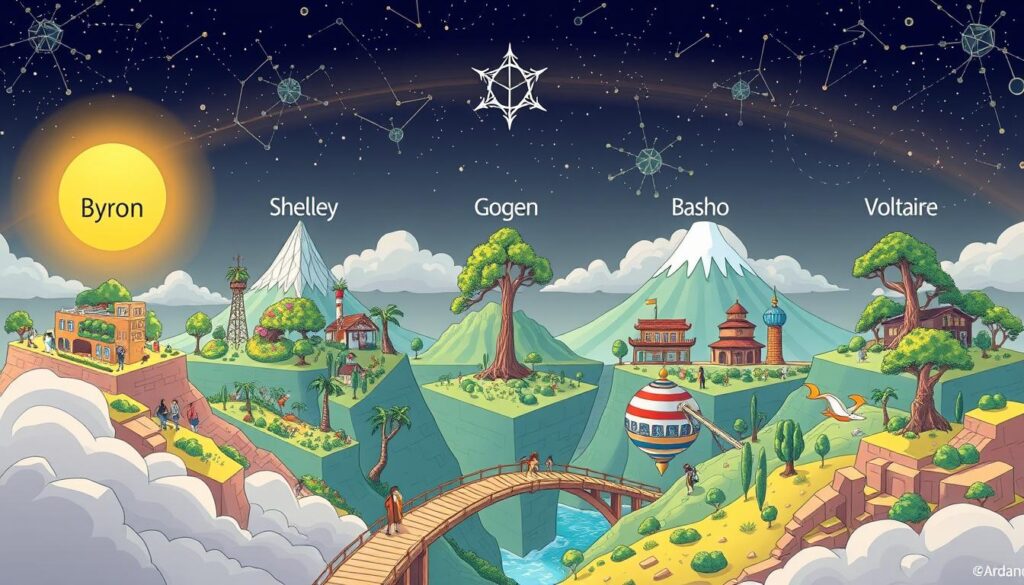
| Era | Focus | Key Developments |
|---|---|---|
| Byron | Foundation | – Federated network – Ouroboros consensus protocol – ADA token trading |
| Shelley | Decentralization | – More community-run nodes – Consensus incentives – Stake pools and delegation – Shorter addresses |
| Goguen | Smart Contracts | – Alonzo upgrade – Decentralized application development – Multi-asset ledger – Verifiable smart contracts |
| Basho | Scaling | – Sidechain integration – Hydra layer-2 scaling solution – Increased throughput |
| Voltaire | Governance | – On-chain governance system – Treasury funded by transaction fees – Community participation in network development |
Cardano’s Five Eras show its dedication to sustainable growth in blockchain19. As it grows, it aims to help people and businesses. It focuses on practical uses and community involvement2019.
Global Partnerships and Real-World Applications
Cardano has become a top blockchain platform by making key partnerships worldwide21. It was founded by Charles Hoskinson, who also helped start Ethereum. Cardano works with governments, companies, and groups to use its tech in real life.
One big example is Cardano’s work with the Ethiopian government. They created a blockchain system for managing education21. This shows how Cardano’s tech can help in areas like education, healthcare, and finance.
Government Collaborations
Cardano has teamed up with governments globally, showing its tech’s value21. These partnerships aim to solve big problems like digital identity and supply chain issues. They also work on making sure credentials are verified.
Enterprise Solutions
Many companies are interested in Cardano’s tech21. They’re using it in finance, logistics, and healthcare. This has led to new, better ways of doing things, making things more secure and efficient.
As Cardano grows, so does its chance to make a difference21. It’s focused on learning, being green, and working together. This makes Cardano a leader in blockchain, ready to make real changes in many areas.
| Partner | Industry | Use Case |
|---|---|---|
| Ethiopian Government | Education | Blockchain-based education management system |
| EMURGO | Finance | Decentralized finance (DeFi) solutions |
| Dish Network | Telecommunications | Blockchain-powered identity and payment services |
| New Balance | Retail | Supply chain traceability and product authentication |
“Cardano’s blockchain-based solutions are revolutionizing how we approach critical challenges in our society. Its partnerships with governments and enterprises demonstrate the real-world impact of this innovative technology.”
Cardano’s work with others shows how blockchain can help many areas2122. It’s all about making things better through blockchain adoption, real-world use cases, and industry partnerships.
Future Innovations and Scalability Solutions
Cardano is a leader in blockchain technology, always looking to improve. It aims to handle up to a million transactions per second. This is thanks to its two-layer blockchain design23.
This design makes it great for handling transactions and smart contracts. It’s set to be a top choice for future blockchain projects23.
Cardano is also working on sidechains. These are separate blockchains that work with the main one24. The Basho upgrade will make the network faster and more efficient24.
Cardano is also looking into Hydra, a layer-2 solution. It will help with more transactions and support for DApps23.
Cardano cares about the environment too. Its Ouroboros Praos protocol is very energy-efficient. This is better than older methods used by other cryptocurrencies24.
This shows Cardano’s goal to lead in sustainable blockchain solutions23.
Cardano also has a special governance system called Voltaire. It lets the community decide on projects and changes. This makes sure decisions are fair and open24.
This approach shows Cardano’s dedication to decentralization and community involvement. It’s key for the platform’s success23.
As blockchain technology grows, Cardano is ready. It focuses on new tech, scalability, and being green. Its careful development, backed by research, aims to lead the blockchain world25.
“Cardano’s future innovations and scalability solutions demonstrate its commitment to becoming a leading platform for decentralized applications and the future of cryptocurrency.”
Conclusion
Cardano is a big step forward in the Cardano ecosystem. It combines sustainability, academic rigor, and new features. This makes it a strong player in cryptocurrency innovation.
The platform uses a proof-of-stake consensus mechanism. It also has smart contract capabilities and a commitment to always improve. These features show its promise to make blockchain future technology more widely used26.
As Cardano grows, its two-layer architecture and the Ouroboros protocol are key. The ADA native currency is also important. These elements help build a strong and growing blockchain network26.
The project’s focus on peer-review and research makes it reliable. It’s seen as trustworthy for new uses like decentralized finance and digital identity26.
The cryptocurrency innovation market has grown fast, reaching $2.2 trillion in 202127. Cardano’s energy-efficient model and ability to solve scalability issues make it a strong contender. Its future looks bright, with more partnerships and applications coming2827.
FAQ
What is Cardano and how does it differ from other blockchain platforms?
What is the purpose and vision behind Cardano?
How is Cardano’s architecture designed?
What is the Ouroboros protocol and how does it contribute to Cardano’s efficiency?
What is the role of ADA, Cardano’s native cryptocurrency?
How does Cardano prioritize security and sustainability?
What are the capabilities of Cardano’s smart contract platform?
What is Cardano’s approach to blockchain development?
How does Cardano’s governance model work?
What is the roadmap for Cardano’s development?
How is Cardano expanding its reach through partnerships and real-world applications?
What are the future innovations and scalability solutions being developed for Cardano?
Source Links
- Discover Cardano | cardano.org | Cardano – https://cardano.org/discover-cardano/
- Relevant research papers and specifications | Cardano Docs – https://docs.cardano.org/about-cardano/explore-more/relevant-research-papers/
- Introduction | Cardano Docs – https://docs.cardano.org/about-cardano/introduction/
- What is Cardano ADA crypto – Blockchain Explained and How Cardano Works | SimpleSwap – https://simpleswap.io/blog/what-is-cardano
- Cardano Prepares Groundbreaking, Permissionless Layer 2 Solution – Brave New Coin – https://bravenewcoin.com/insights/cardano-prepares-groundbreaking-permissionless-layer-2-solution
- Cardano Development Company – Cardano Blockchain Development – https://rejolut.com/blockchain/cardano-development/
- “Cardano Blockchain 2024: Guide to DApps & Enterprise Solutions – https://www.rapidinnovation.io/post/ultimate-guide-to-cardano-development-smart-contracts-defi-and-enterprise-solutions
- What is ADA? Exploring the Cardano blockchain and its token – https://www.okx.com/learn/what-is-ada-exploring-the-cardano-blockchain-and-its-token
- The Role of ADA in Cardano’s Ecosystem – https://forum.cardano.org/t/the-role-of-ada-in-cardano-s-ecosystem/136584
- How Cardano (ADA) is Revolutionizing the Cryptocurrency Market | Hexn – https://hexn.io/es/blog/what-is-cardano-ada-275
- Cardano (blockchain platform) – https://en.wikipedia.org/wiki/Cardano_(blockchain_platform)
- Cardano (ADA): The “Sustainable Blockchain” Built for the Future – https://medium.com/@bitcofun/cardano-ada-the-sustainable-blockchain-built-for-the-future-486f18e4c7cc
- Which Cryptocurrency is the Most Environmentally Friendly? – https://www.trgdatacenters.com/resource/most-environment-friendly-cryptocurrencies/
- Design rationale | Cardano Docs – https://docs.cardano.org/about-cardano/evolution/cardano-design-rationale/
- Cardano Blockchain Development Company | Shamlatech – https://shamlatech.com/cardano-blockchain-development/
- Cardano: An Open-Source Blockchain Protocol | Gemini – https://www.gemini.com/cryptopedia/cardano-ada-staking-blockchain
- What Is Cardano & How Does It Work? Who Created ADA? – https://kriptomat.io/cryptocurrency-prices/cardano-ada-price/what-is/
- Hoskinson Details Cardano’s Bill Of Rights For Governance – https://bitcoinist.com/hoskinson-cardano-bill-of-rights/
- The Cardano Roadmap Eras Explained: Byron, Shelley, Goguen, Basho, and Voltaire – https://cryptopotato.com/the-cardano-roadmap-eras-explained-byron-shelley-goguen-basho-and-voltaire/
- Cardano (ADA) Deep Dive: Reaching $0.50 and Future Potential – Brave New Coin – https://bravenewcoin.com/insights/cardano-ada-deep-dive-reaching-0-50-and-future-potential
- Ndax Blog – Latest Crypto, web3 and blockchain Insights – https://ndax.io/en/learn/coins/what-is-cardano-ada
- Cardano Real World Utility: How ADA is Shaping the Future! – https://coinbureau.com/analysis/cardano-use-cases/
- Cardano: a new Blockchain Innovation – https://ofpfunding.com/cardano-blockchain/
- 5 New Technological Innovations In The Cardano Blockchain 5 new technological innovations in the Cardano blockchain – https://thecryptobasic.com/2024/01/14/5-new-technological-innovations-in-the-cardano-blockchain/
- Cardano will lead the Bitcoin renaissance – https://adapulse.io/cardano-will-lead-the-bitcoin-renaissance/
- What is Cardano? Discovering the Potential of ADA Cryptocurrency – https://atomicwallet.io/academy/articles/what-is-cardano-discovering-the-potential-of-ada-cryptocurrency
- A Deep Dive into Cardano and Ethereum – Analyzing the Pros and Cons of Each Platform – https://websites.umass.edu/mrenny/2023/04/28/a-deep-dive-into-cardano-and-ethereum-analyzing-the-pros-and-cons-of-each-platform/
- ADA Coin: Learn All About The Famous Cardano Cryptocurrency – https://www.bitdegree.org/crypto/ada-coin




